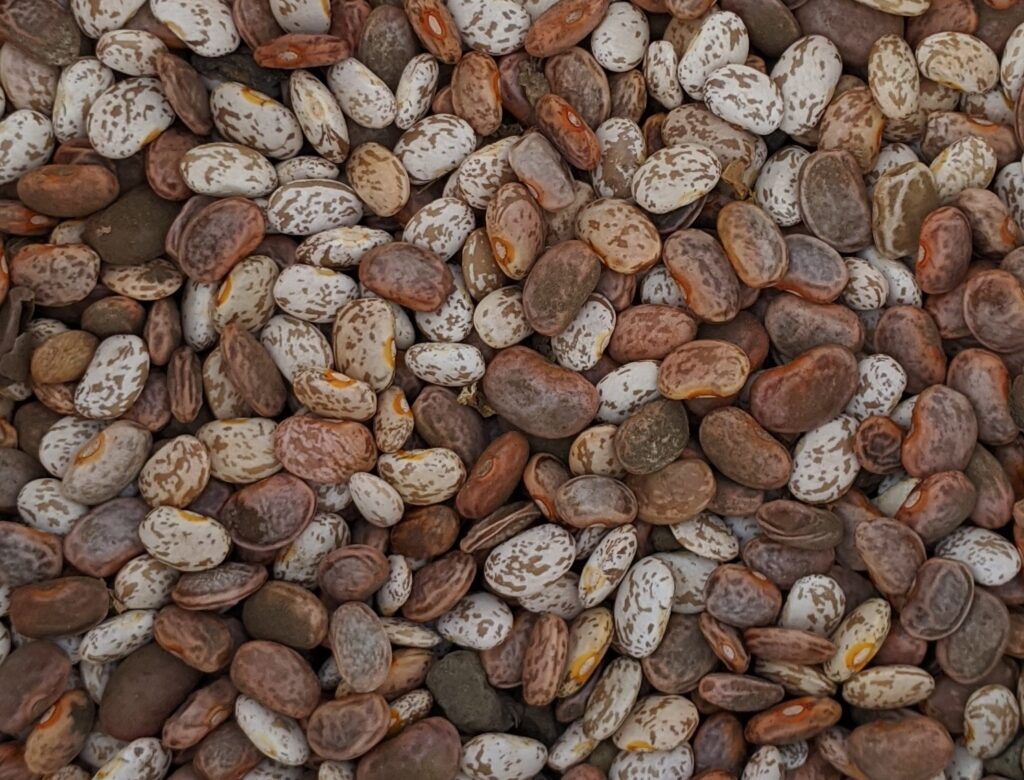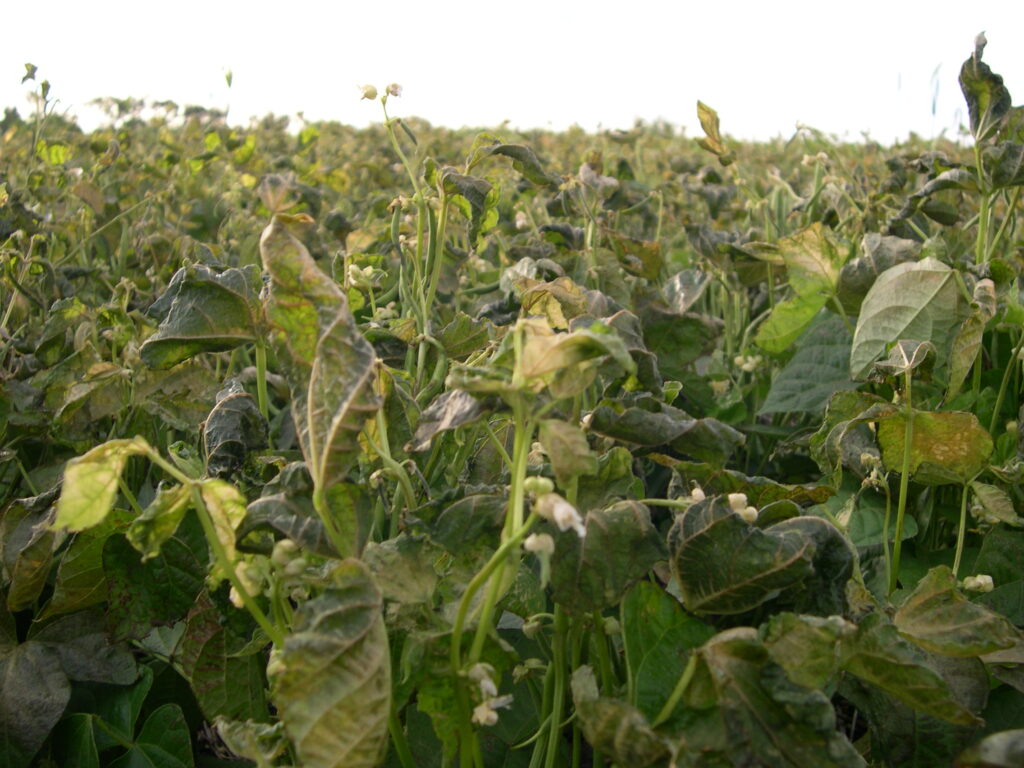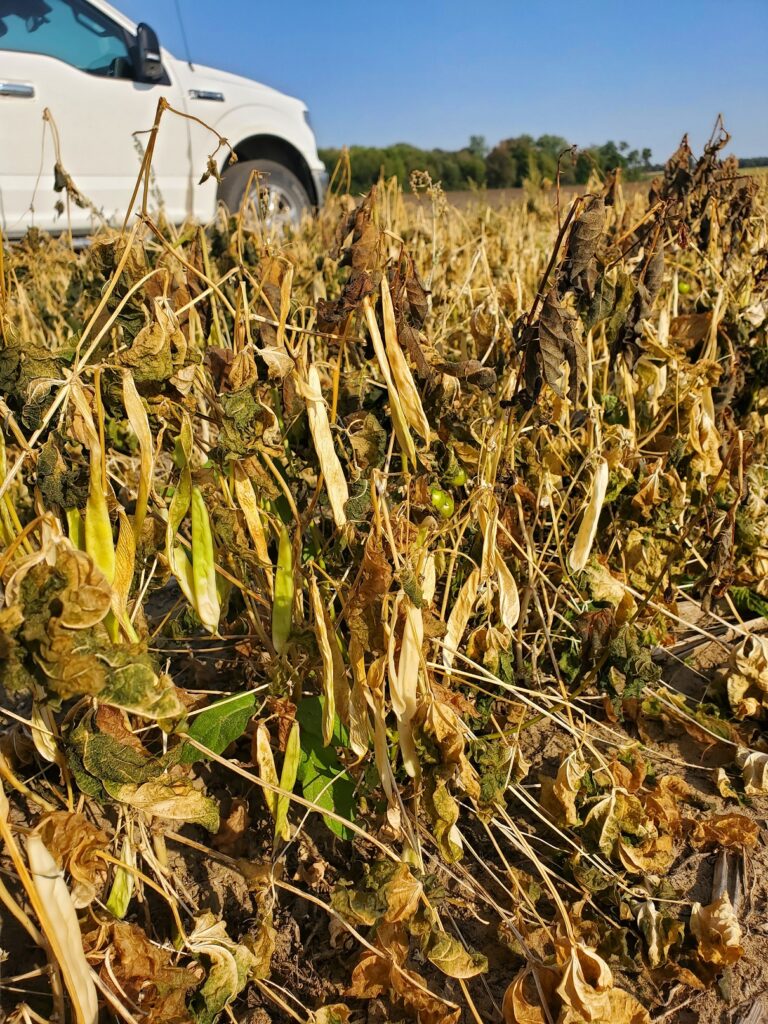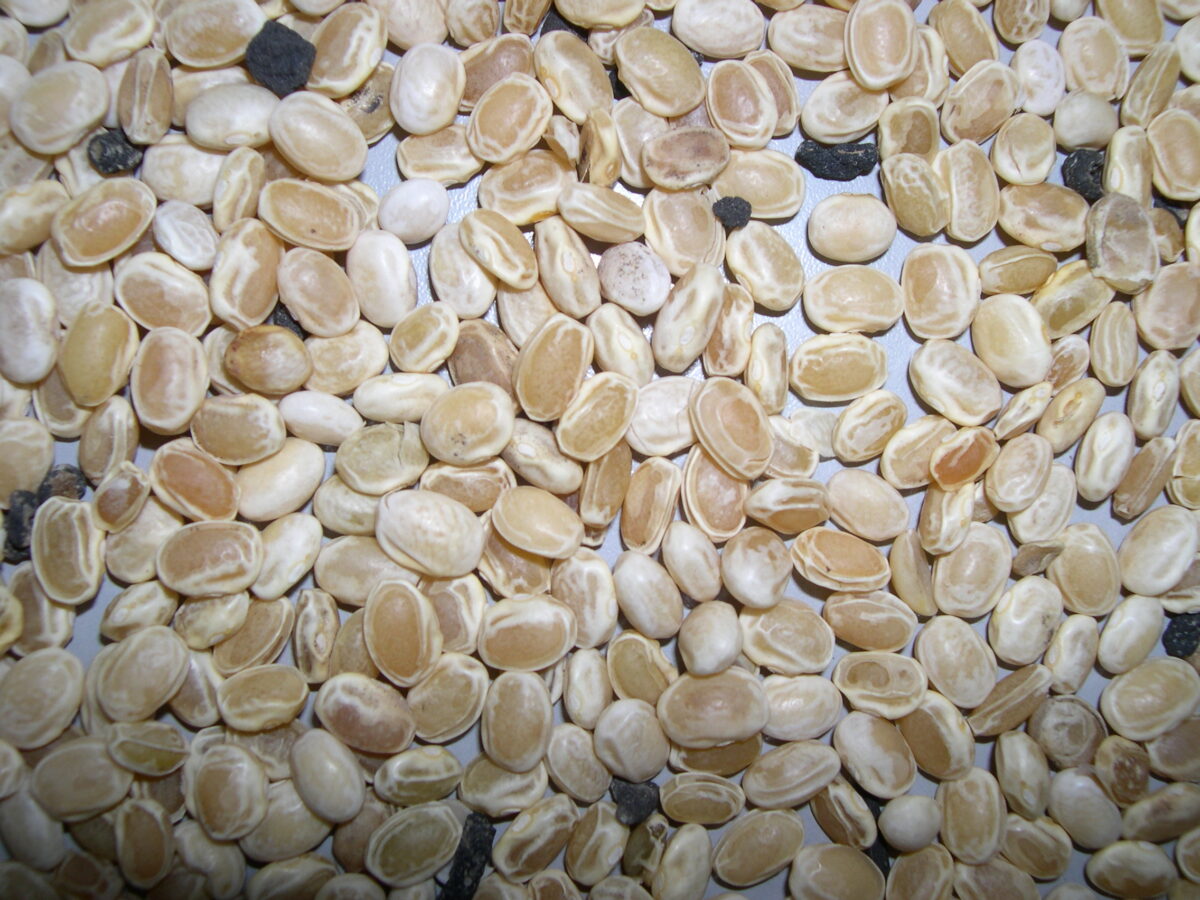The extent of fall frost damage depends on how low the temperature gets and for how long. Light frost (0 to -1°C) may kill the top leaves but not penetrate the canopy. In this case, plants will continue to mature but will take longer. There may be some green seed where leaves were killed. If soils are moist, they will retain some heat which may reduce the impact of frost. A strong wind can also reduce severity of frost. When the entire plant is killed, seed fill stops (see feature image, Photo credit: D. Lange) .
If frost occurs close to maturity, pods that are yellow to brown in colour are often sufficiently mature to escape damage. Beans that are still green will shrivel and retain their green colouring, resulting in increased pick. Delaying harvest until the beans dry down sufficiently will help prevent staining and improve separation. Coloured bean seed coats that have not fully changed colour may remain white or off-white, and white beans that have not yet become bright or creamy white may maintain a yellow-ish colour. Early frost typically results in yellow beans in the harvest sample.
If plants have been damaged by fall frost but stems are still green a few days later, there may still be value in applying a pre-harvest herbicide to aid in dry down. Weeds may not be damaged by frost to the same extent as bean plants. If a systemic pre-harvest herbicide has already been applied, a frost event may slow or interrupt the movement of the herbicide through plants and reduce the effectiveness of the herbicide.



References:
Agronomy Guide for Field Crops – Publication 811. Ontario Ministry of Agriculture, Food and Rural Affairs (OMAFRA).
The Bean Report. Sept 2020. https://www.manitobapulse.ca/2020/09/the-bean-report-september-9-2020/ Manitoba Pulse and Soybean Growers.
